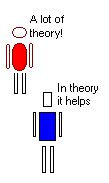1. Subsurface
drainage.
|
|
This articles discusses in general terms the
classification of horizontal subsurface
drainage systems, their design
optimization, the history, and the environment,
as well as (vertical) drainage by wells
|
2. Subsurface
drainage criteria.
|
|
The article on drainage criteria discusses
the aspects that need to be covered,
systems analysis, the processes of crop yield
response and production to variations of the
water table or phreatic surface regime with the
aim to formulate the drainage objectives and to
provide design criteria.
|
3. Subsurface drainage
and drain spacing equations.
|
|
The drain spacing equations refer to the
formulas that are used to design a horizontal
subsurface drainage system, that is to say a
system diches or subsurface pipes (tiles)
inccluding the darin spacing.
The equations are also applicable to areas
with a gradient, and they are adjustable to
the variation of the hydraulic conductivity
(permeability) in various soil layers, both
in horizontal and vertical direction
(anisotropy)
The applicable software is introduced.
|
4. Well spacing equations
for vertical drainage.
|
|
Drainage by wells is called vertical drainage.
Like for horizontal drainage, there are also
spacing equations for vertical drainage that
take into account the variation of the soil's
permeabilty in different layers as wel as the
anistropy of the hydraulic conductivity.
The applicable software is introduced.
|
5. Water balances
and drain discharge.
|
|
Water balances are introduced for four soil
layers in the profile, from the surface down
to the bottom of the aquifer.
The water balances serve to calculated the
design discharge of the drains or wells.
This drainage requirement is important in the
design of the drainage system to to determine
the capacity hydraulic engineering structures
serving the evacuation of the drainage water
to the outlet.
The text needs the support of the examples
given in continuation below.
|
6. Examples of
water balances.
|
|
In this document a series of examples of
water balnces is presented regarding the
subsurface drainage under varying
hydrological conditions.
The examples refer to drainage from the
soil surface up to the drainage in the
aquifer.
|
7. Soil salinity
control by means of subsurface
drainage.
|
|
In irrigated lands, soil salinity is a
common problem globally.
In many instances salinity control must be
done with a subsurface drainage system.
Here, the origin of the soil salinity is
explained, the worldwide distribution of
saline soils is shown, and the diagnosis,
the leaching and the water and salt
balances are discussed, while the applicable
software and mathematical simulation models
are presented.
|
|
|

|
|
Ara glaucogularis
|

|
|
Garceta nivea
|

|
|
Quetzal
|

|
|
Mochuelo calubre
|
|




